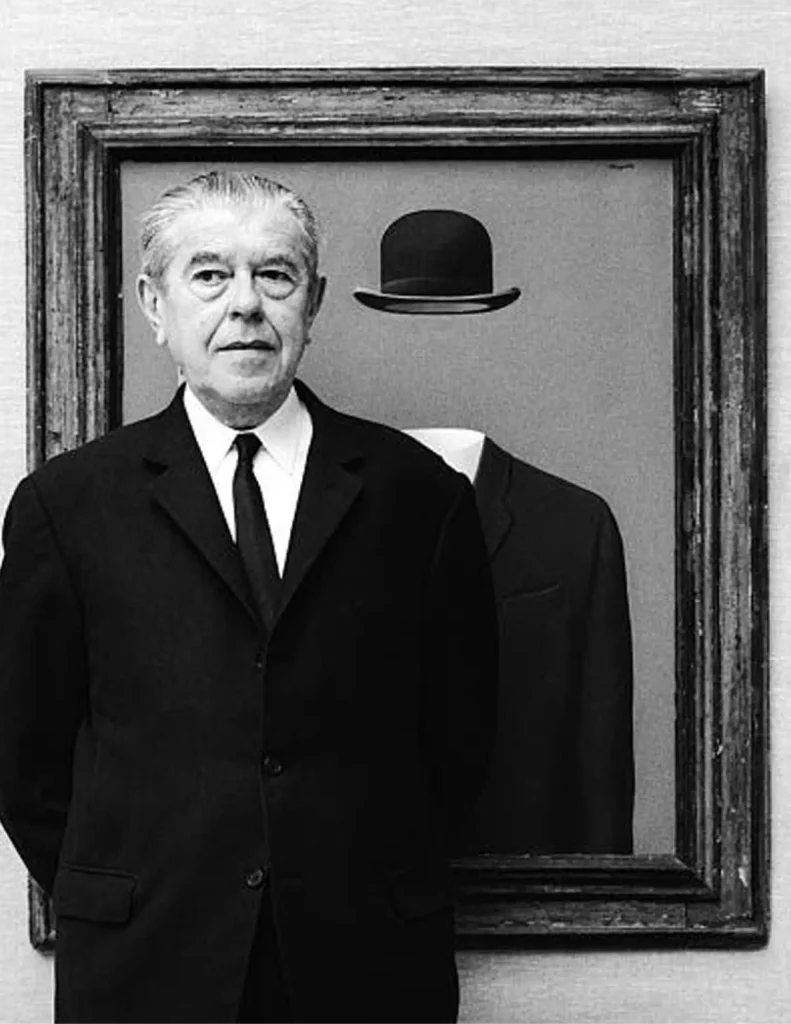
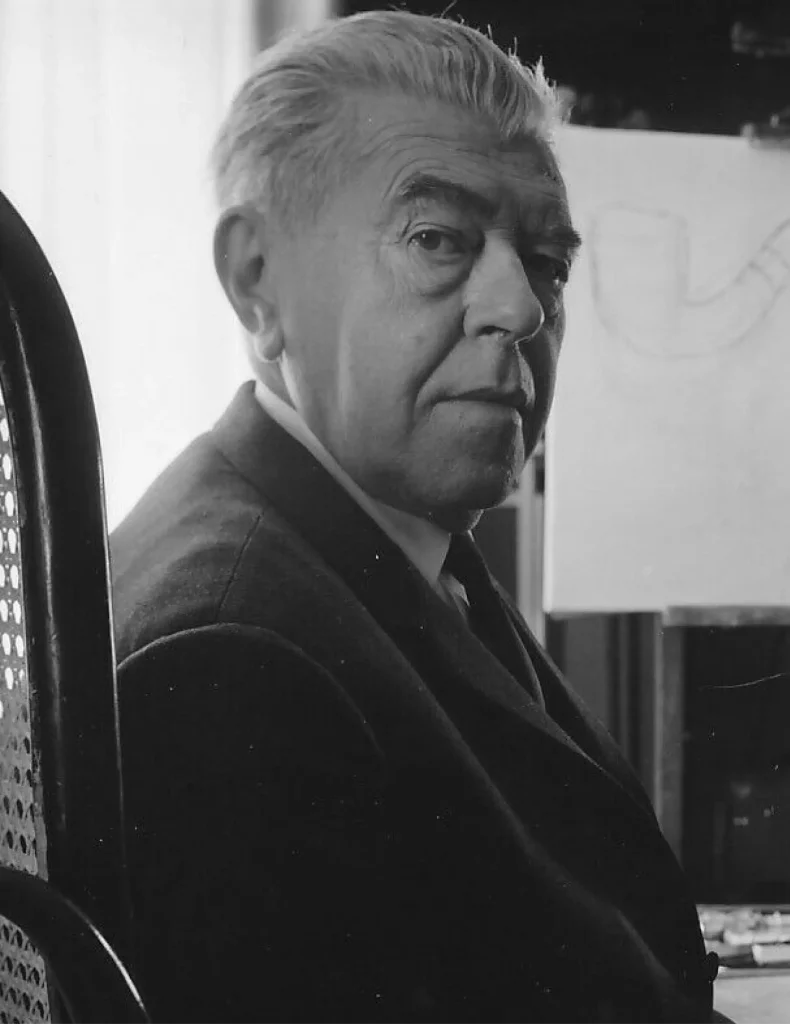

“Everything we see hides something else.”
René Magritte, an iconic figure of Surrealism, was born on November 21, 1898, in Lessines, Belgium. His work, both fascinating and enigmatic, redefined our perception of reality and images. As an elusive artist, he dedicated his life to blurring the boundaries between the imaginary and the real, inviting viewers to question the visible.
A graduate of the Royal Academy of Fine Arts in Brussels, Magritte began his career in advertising design before fully committing to his artistic journey. Influenced by Sigmund Freud and the poetic experiments of his contemporaries, he joined the Surrealist movement in the 1920s.

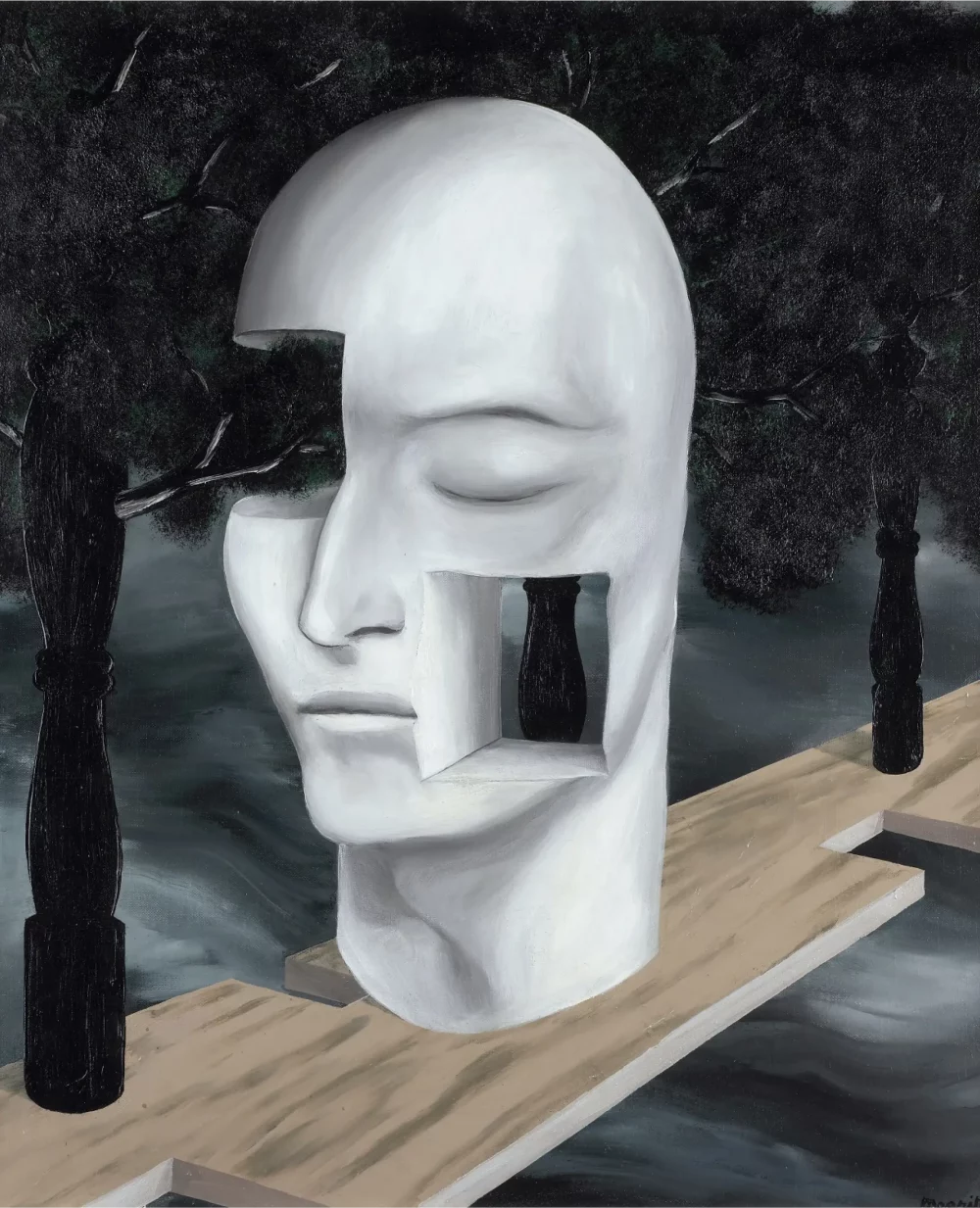
René Magritte
(1898-1967)
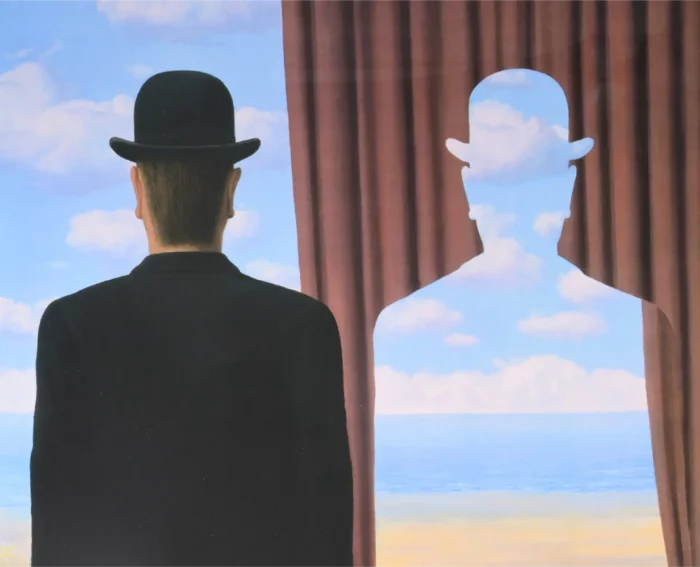
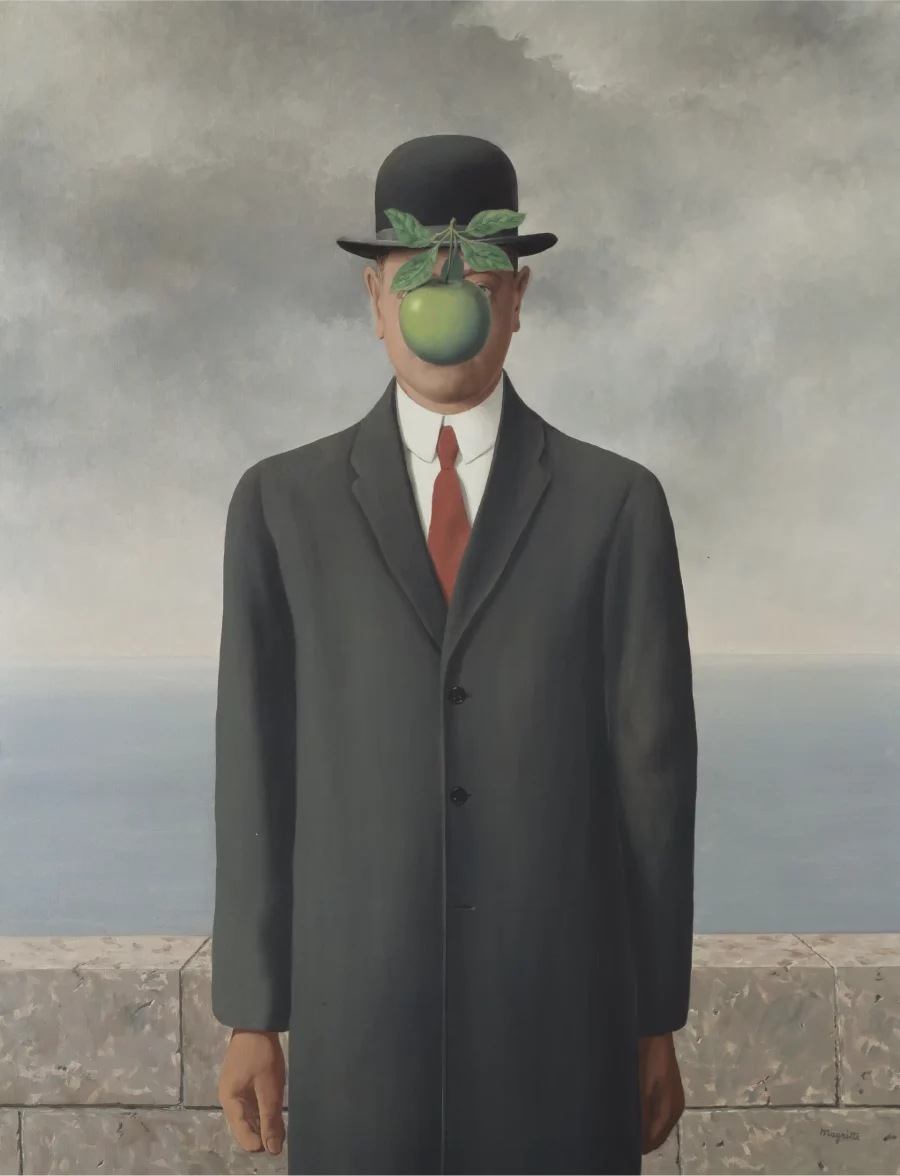
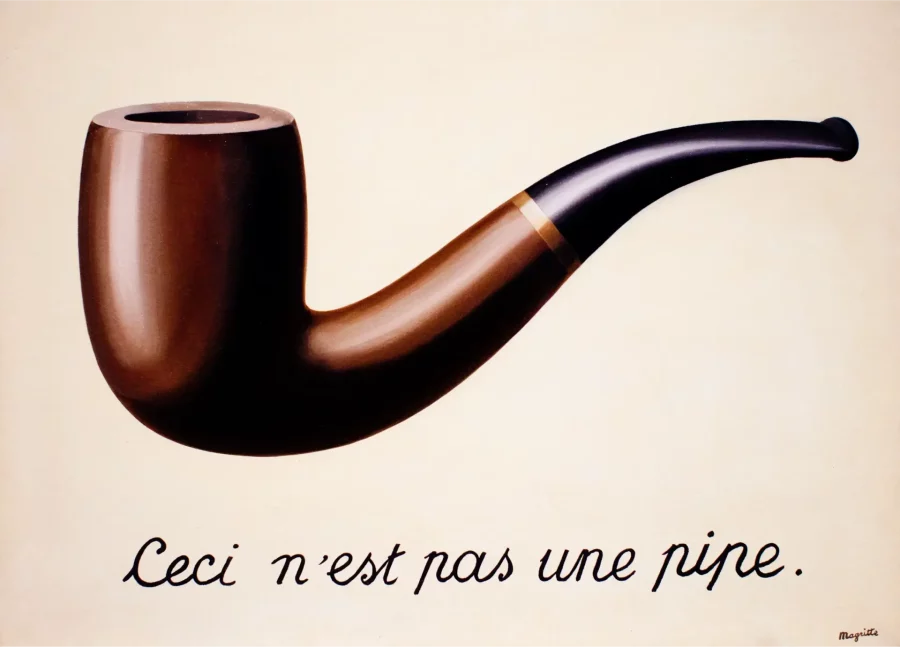


“The mind loves the unknown. It loves images whose meaning is unknown, since the meaning of the mind itself is unknown.”
One of his most famous works, The Treachery of Images (1929), perfectly illustrates his artistic quest. Featuring the famous inscription “This is not a pipe,” Magritte challenges viewers to reflect on the nature of representation. This painting embodies his obsession with paradox and his ability to make the ordinary extraordinary. Through this simple object, he invites us to consider the distance between words, objects, and their images.
Magritte also stands out for his ability to integrate familiar objects into disorienting contexts: a faceless man, a giant apple, or a blue sky painted inside a cage. These recurring elements, presented in meticulously crafted compositions, question our understanding of the everyday and disrupt our certainties.

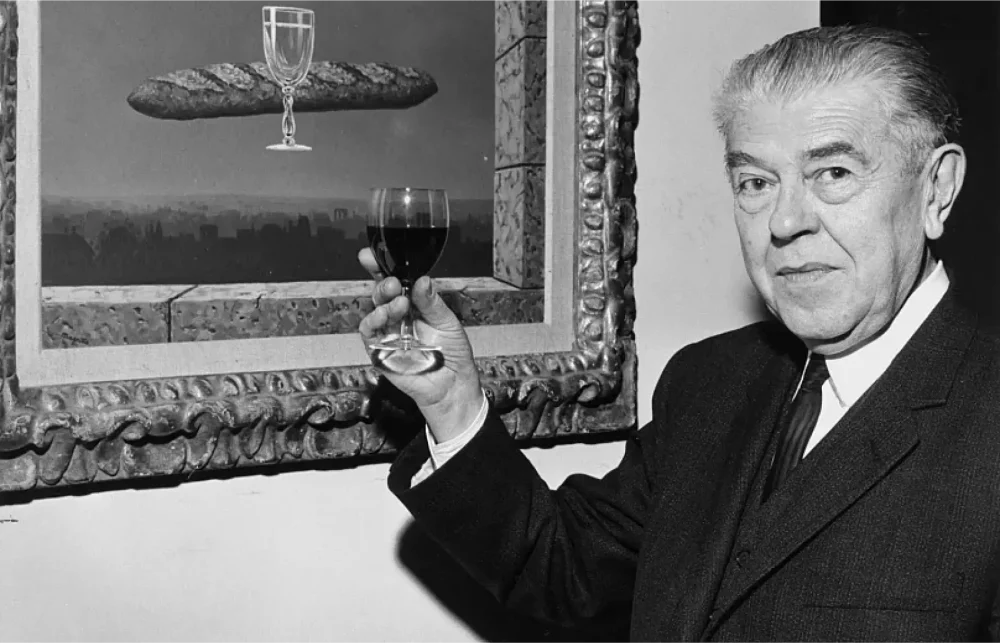
René Magritte in 1966 at MOMA, New-York
His career, though marked by difficult periods, including World War II, remained prolific. In the 1950s, he gained international recognition through major exhibitions in New York and Paris. His influence extends beyond the boundaries of Surrealist art, inspiring generations of artists, advertisers, and even filmmakers.
René Magritte passed away on August 15, 1967, leaving behind a timeless body of work that continues to captivate and provoke. Through his paintings, he reminds us that reality is never what it seems and that behind every image lies a multitude of meanings.

